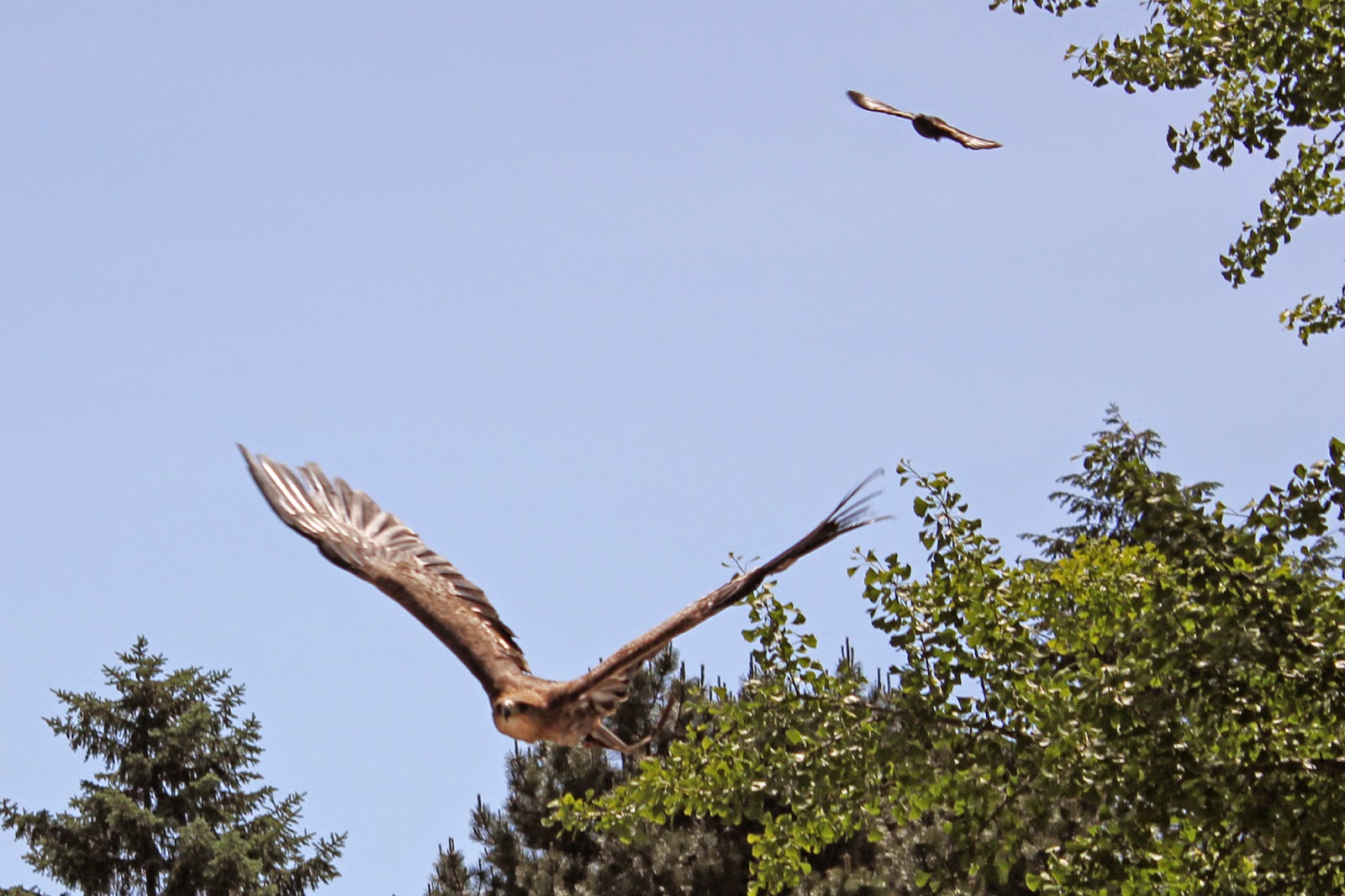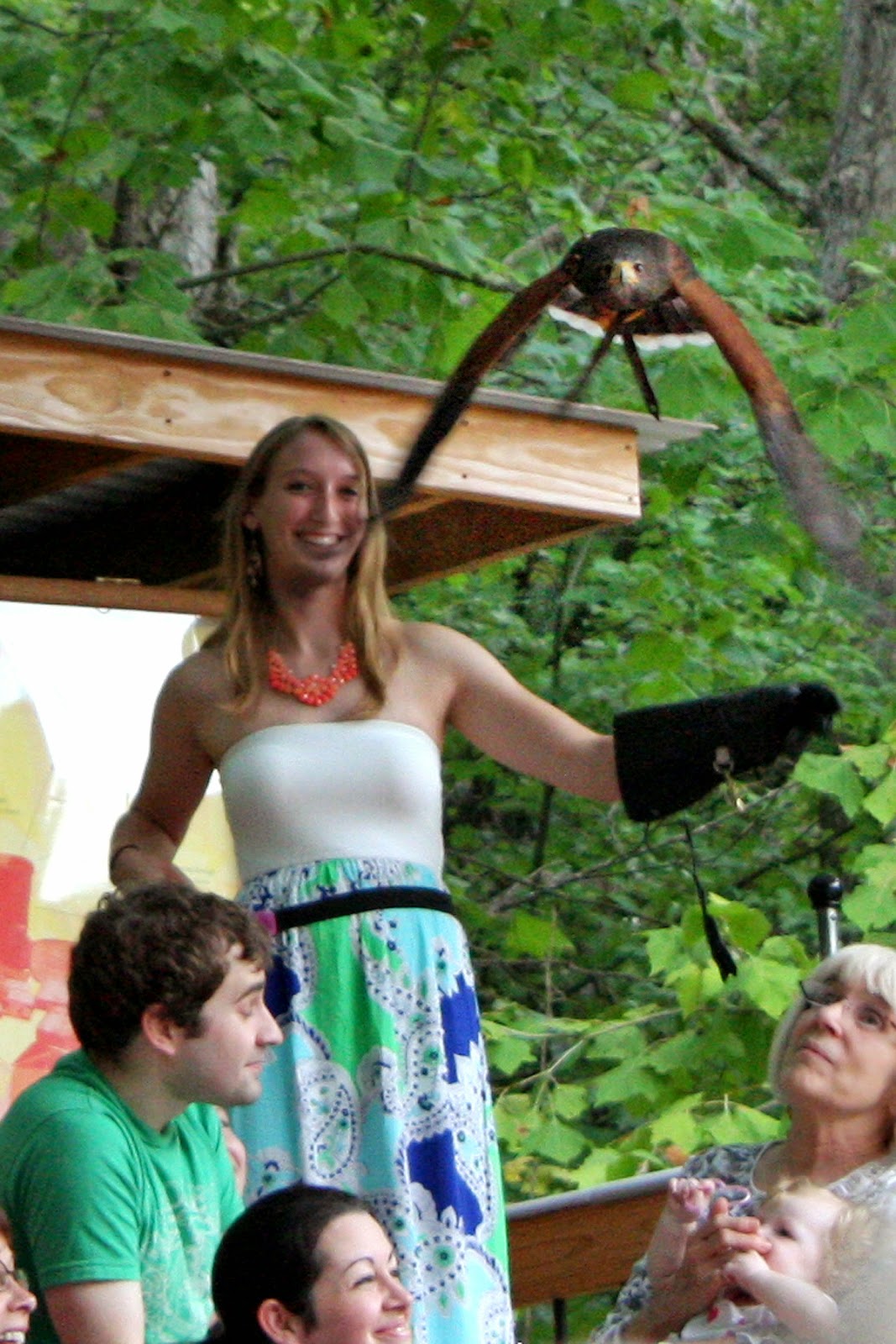There are many
challenges when doing a zoo show program.
Weather has to be taken into account, wind speeds compensated for, and
the crowd carefully monitored to make sure no one tries to stand up during the
show. These challenges I was
always prepared for; one thing I never took into account was the neighbors.
By neighbors I mean the
wild (or semi-wild) birds that call the zoo
home. When our birds first move
into the neighborhood in the spring they are generally ignored by the wild birds
unless they end up in a tree while learning their new patterns.
Many zoos and theme parks release peafowl such as this albino Peacock (photo by Gay Schroer at Magnolia Plantation)
The biggest problem we
have when we first arrive is the peafowl.
Peafowl are not native, and are intentionally released by zoos and theme
parks for their guest’s enjoyment.
The fowl quickly call wherever they are released home, and rarely wander
off grounds.
Both Milwaukee County Zoo and Grant’s Farm have free ranging
Peacocks and Peahens that consider the entire zoo their territory. In the winter months they have free
range of the exhibits where we keep our birds, so they are often surprised and
upset when they suddenly cannot cross into “their” territory. They wander into the theaters during
practices and we have to stand guard in the weathering area (the outdoor area
where we keep our birds on display) to prevent Peahens from charging our poor
birds. Peafowl may look ridiculous,
but they have strong kicks and they could do a
fair amount of damage to our birds, especially the Peacocks, which have spurs
on their legs. After a while the
peafowl start to realize they cannot enter certain areas, but we still have to
stay on guard because peafowl are not the only birds that are not pleased with
our birds’ presence.
Songbirds, understandably,
are not thrilled when a group of predators move into their
territory--especially during breeding season. Once songbirds have eggs in their nests they begin to
display a behavior called mobbing.
They will gather in groups and dive bomb large birds of prey to
“encourage” them to leave the area.
Unfortunately, these birds do not realize that our birds have little
interest in them or their young—our birds get three free meals a day.
The worst offenders are
the Common Grackles, black songbirds that leave nothing to chance. I am especially bitter about them
because they chased a kestrel I worked with into the woods. Every time he tried to fly back into
the theater they chased him further into the woods (don’t worry we got him
back…it just took a while).
The grackles this year
were especially numerous. Diablo
(a Tawny Eagle), Reese (Great Horned Owl) and Clark (Bald Eagle) got the worst
of it. Both Reese and Diablo had
clouds of five to seven grackles following them throughout their patterns. We used the grackles’ natural fear of
humans to our advantage, strategically placing ourselves between them and our
birds or flying our birds into the crowd.
Robins, especially juveniles, will also harass our birds--often lurking
in the trees above the weathering area in wait.
The scariest case of wild
bird interaction however did not involve songbirds, but a wild juvenile
Cooper’s Hawk who wanted to chase our Military Macaws my first year doing
shows. Suddenly instead of two
birds doing loops around the theater there were three! Luckily we were able to call our birds
down to safety and we never saw the young hawk again.
Despite all of the trouble
wild birds cause, I will admit there is no better way of finding a bird that
has flown off or been blown out of the theater by wind. Just follow the sound of angry
songbirds and nine times out of ten we find our bird. Although sometimes we find wild birds of prey!
There are many challenges
to face during zoo show programs, but none quite as unpredictable
as the local bird population. They
can be an annoyance, an amusement and even aid you, assuming they did not cause
the bird to seek shelter in a tree in the first place. Regardless, they certainly keep us on
our toes!
If you live in or are
visiting the Milwaukee, Wisconsin area this summer be sure to visit the
Milwaukee County Zoo, and in particular the bird show presented by the World
Bird Sanctuary.




























.jpg)









